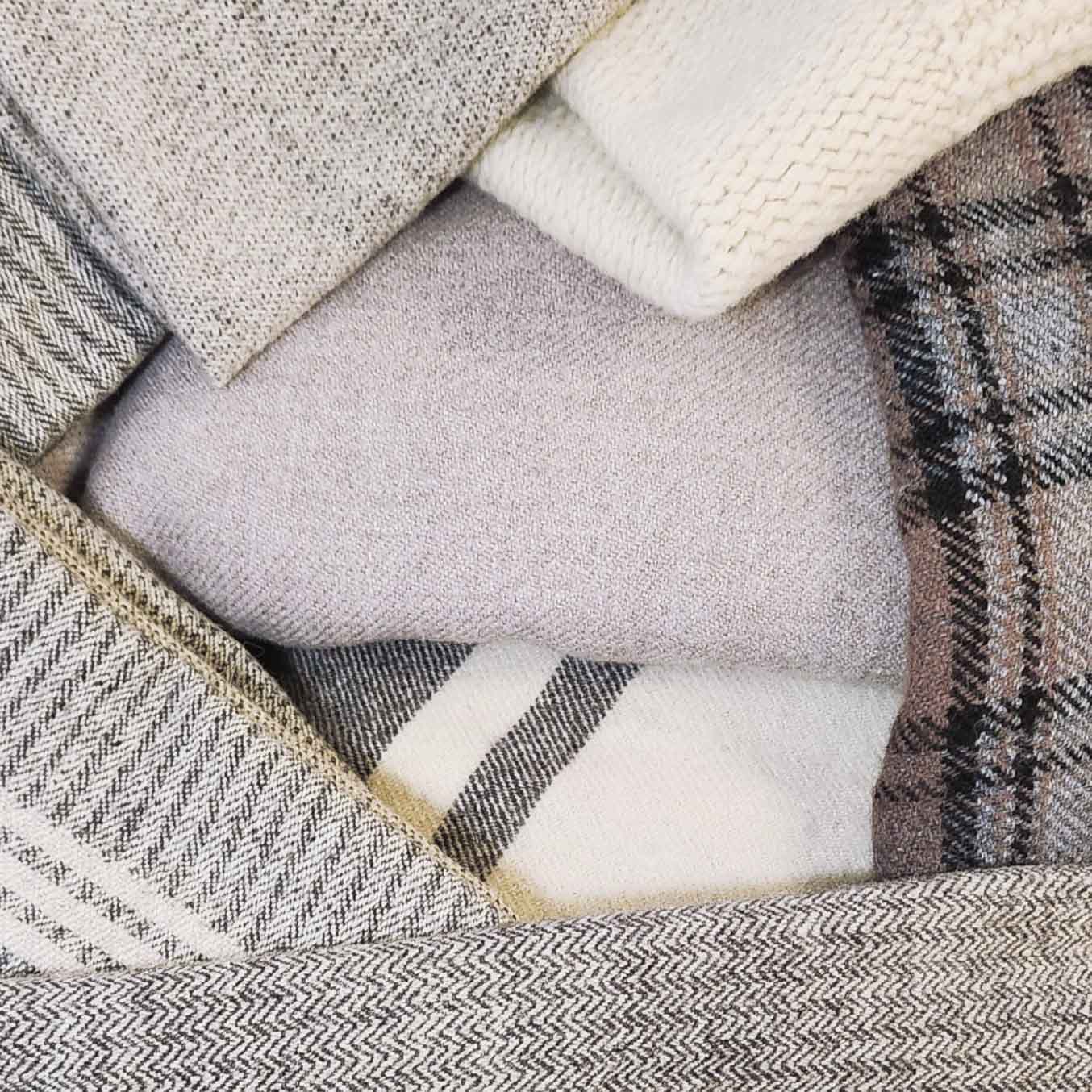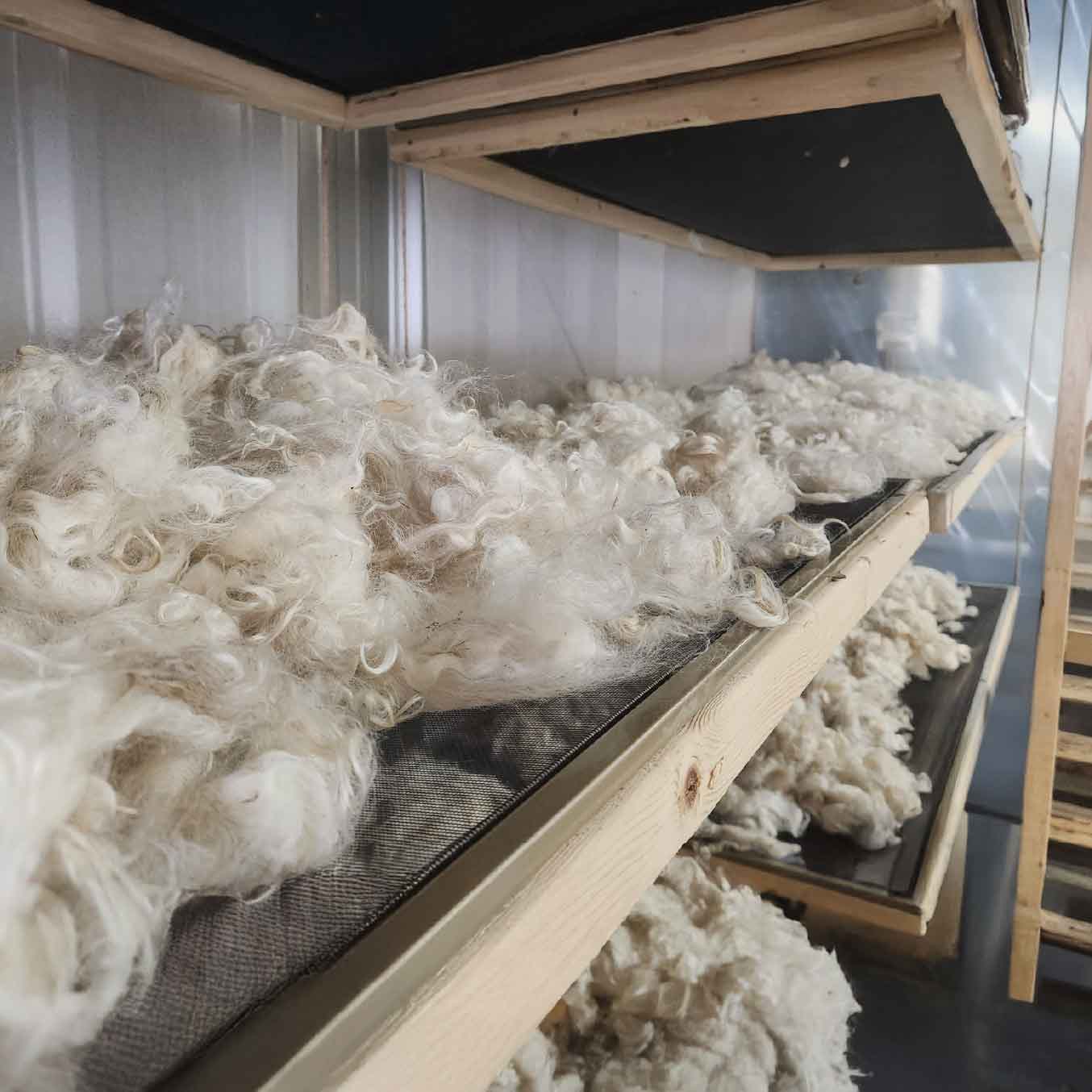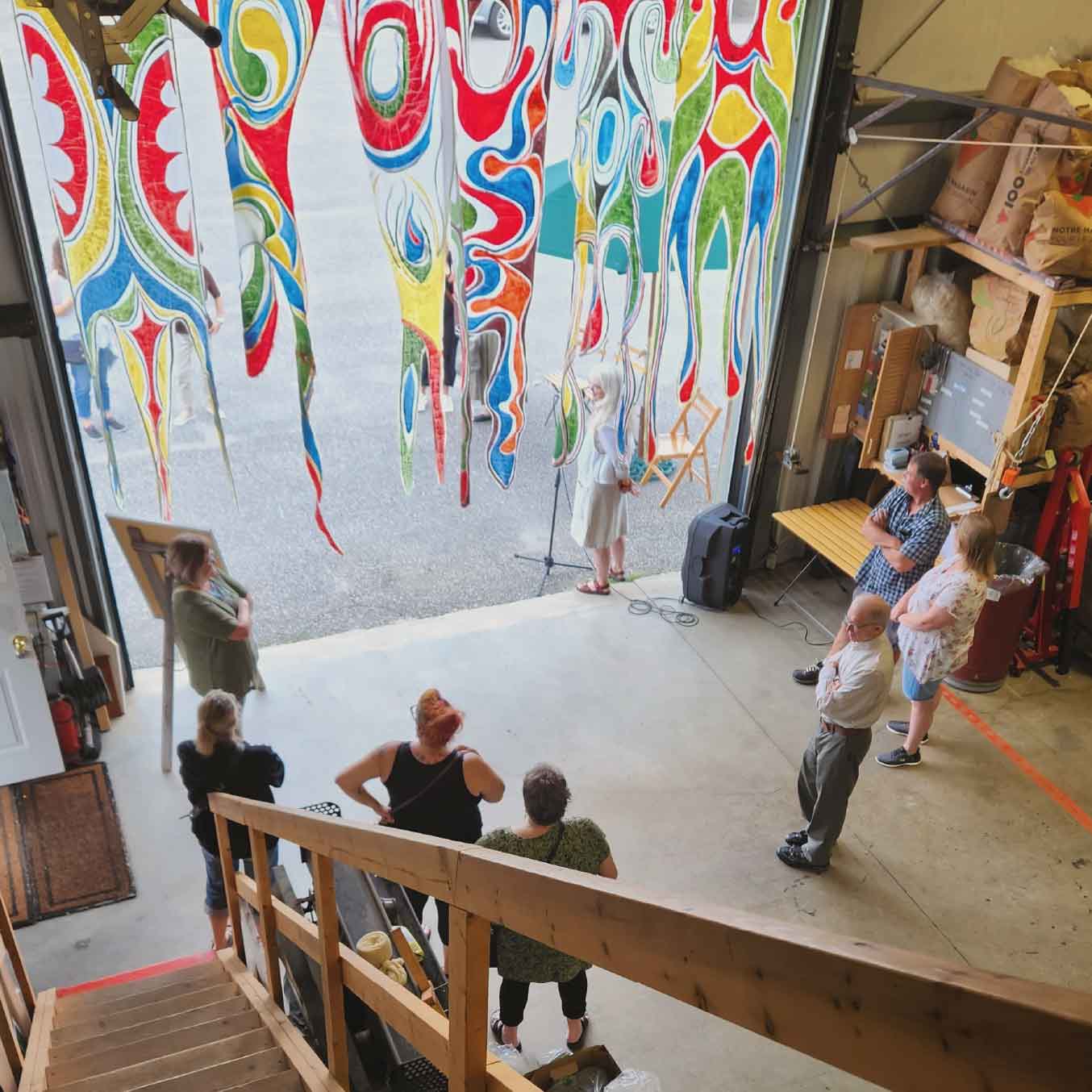Made from plants, flowers, barks, bugs or other items found in nature, our natural dyes are rich and vibrant. Our wool is spun, plied, and wound into skeins, then dyed with natural dyes, to beautifully complement the natural tones of our white, brown, gray, and black sheep’s wool and alpaca fleece.
While many of us are accustomed to fast fashion dyeing which can be as quick as making Kool Aid, natural dyeing is a slow and meditative process.
The Process
First a seed is planted…
Before a natural dye can be used, the plants, many of which come from our own garden or from our local ecosystem, need to grow. There is a time and a season for planting, nurturing, and harvesting. Once they are harvested, some plants need to be dried, ground for storage or, in some cases, fermented to produce the natural dye.
After producing or harvesting the dye substance, an extract is made from the dye stuff by simmering or soaking for an hour or up to a week depending on the particular substance.
In addition, the yarn is scoured (washed) and then mordanted (simmered with Alum) to ensure optimal colour fastness.
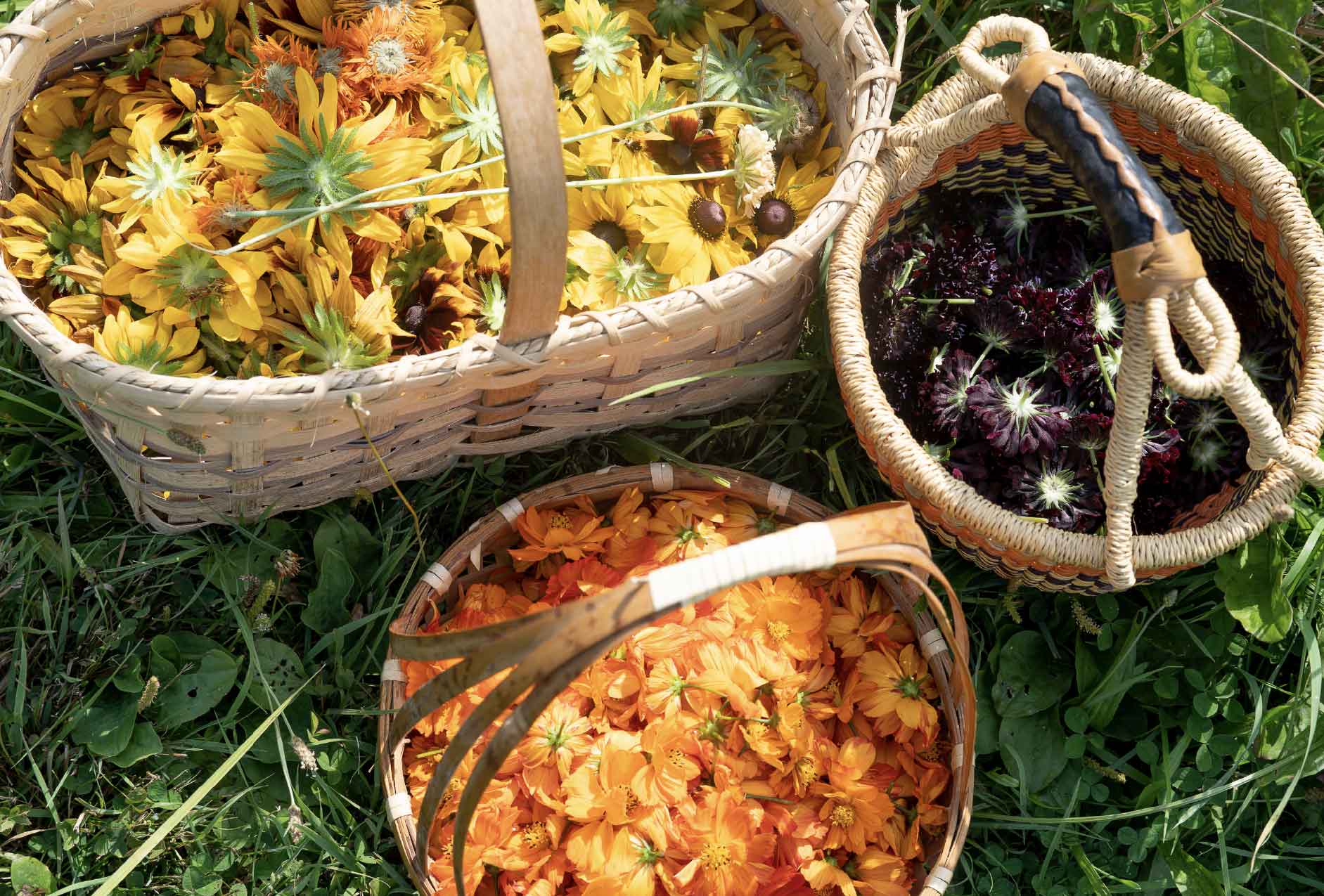
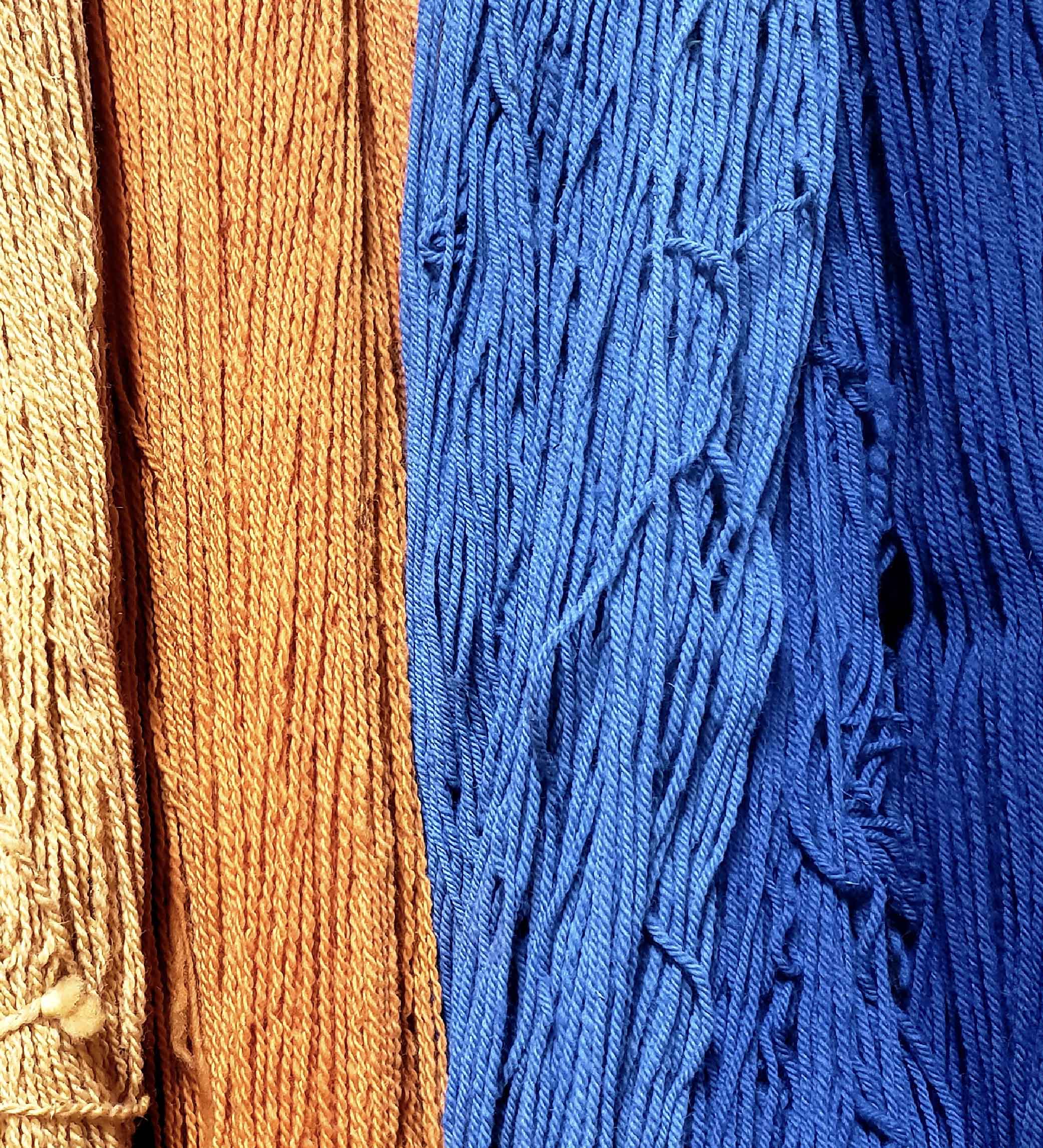
Now we are ready for dyeing
Most dyes involve simmering yarn in the dye extract for a period of an hour. Some require much longer timeframes.
Indigo is an altogether different and wonderful process. As the indigo pigment is not water soluble, a reducing agent such as fruits, fructose or iron is required to dissolve the indigo, making a surprising clear yellow liquid with a rich earthy scent. After the indigo dissolves, it can penetrate the yarn or fabric. Upon removal from the indigo vat and subsequent exposure to oxygen, the yellow magically turns to stunning hues of blue. Most indigo requires multiple dips in the vat each 10-15 minutes in duration to obtain the dark rich blue colours.
While most indigo dyestuff is imported, some plants can be grown locally.
After weeks of drying to set the pigment, the yarn is washed several times, dried, and wound into cakes (balls) for our retail shop, or onto cones for our looms.
A selection of our dye stuffs includes: Coreopsis, Orange Cosmos, Marigold, Madder Root, Sumac, Cochineal, Rudbeckia, Indigo Leaves, Logwood, Lac, Stinging Nettle, Woad, Walnut, Goldenrod, Black Knight Scabiosa, and Jewelweed
How to Care For Natural Dyes
Natural dyes have unique qualities and requirements. Beautiful and gentle on the planet, they can fade and change over time. Some, like indigo, are not rub fast.
Care instructions:
- Wash separately, especially when new
- Turn garment inside out and wash with a gentle soap by machine on the handwash cycle or by hand in lukewarm water.
- Avoid contact with acids, deodorants and perfumes
- Wear with other similar colours – avoid contact with whites
- Store out of direct sunlight (do not leave in a sunny car window)
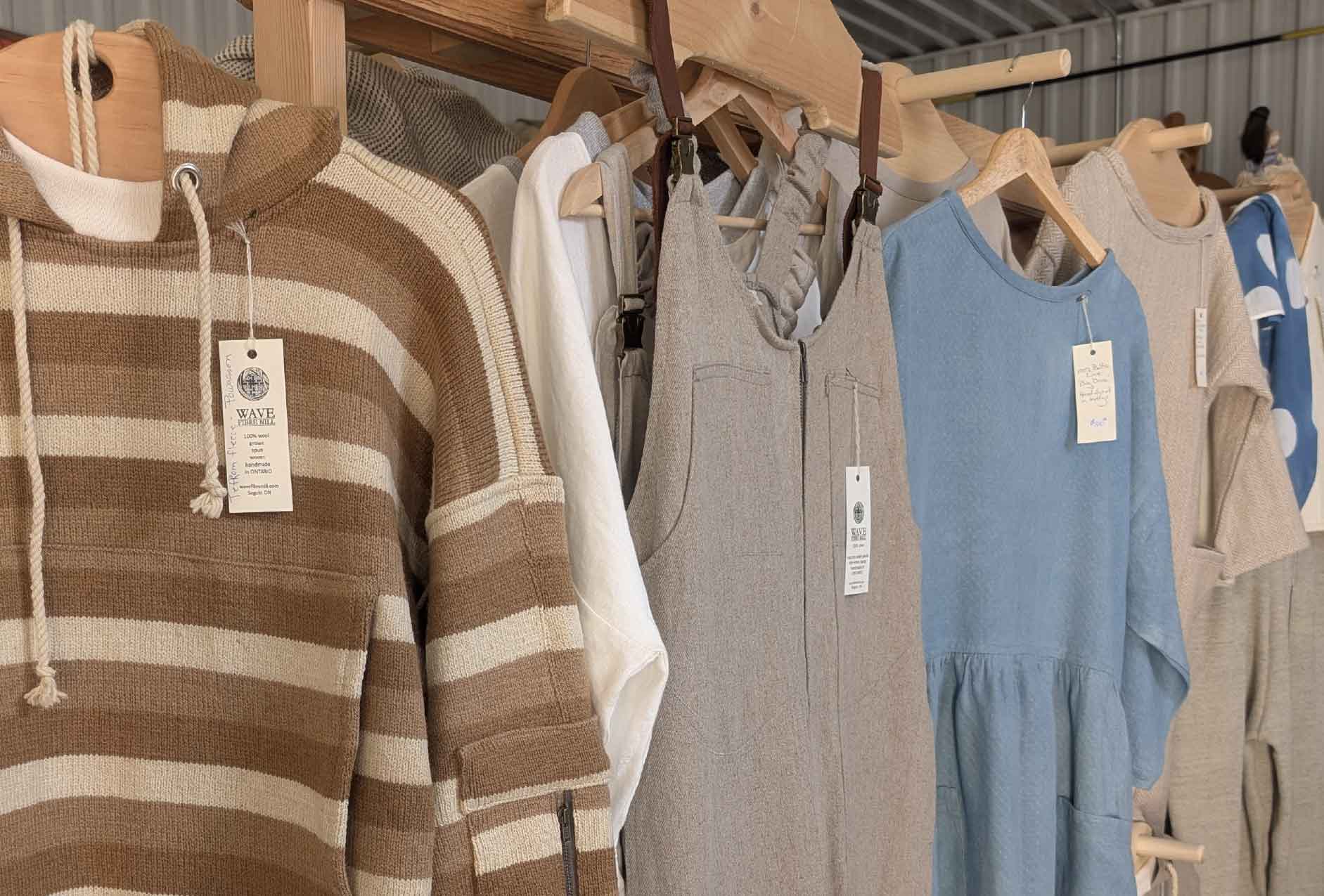
Custom Natural Dyeing
Due to the labour intensive nature of natural dyeing, we do not offer custom natural dyeing. Our full production is used for our retail store and in house production and experimentation.
